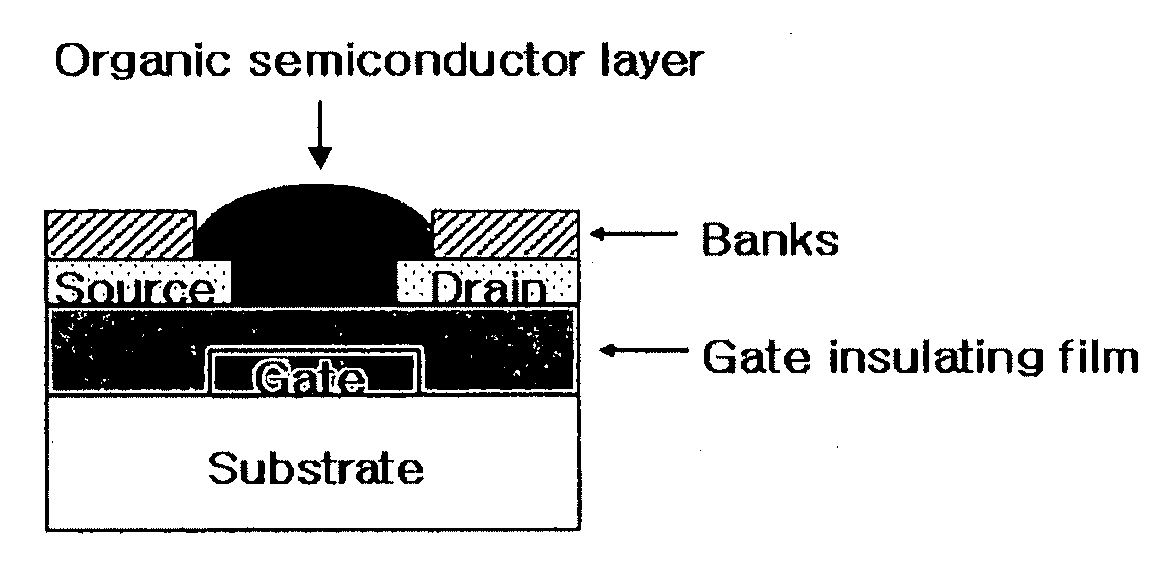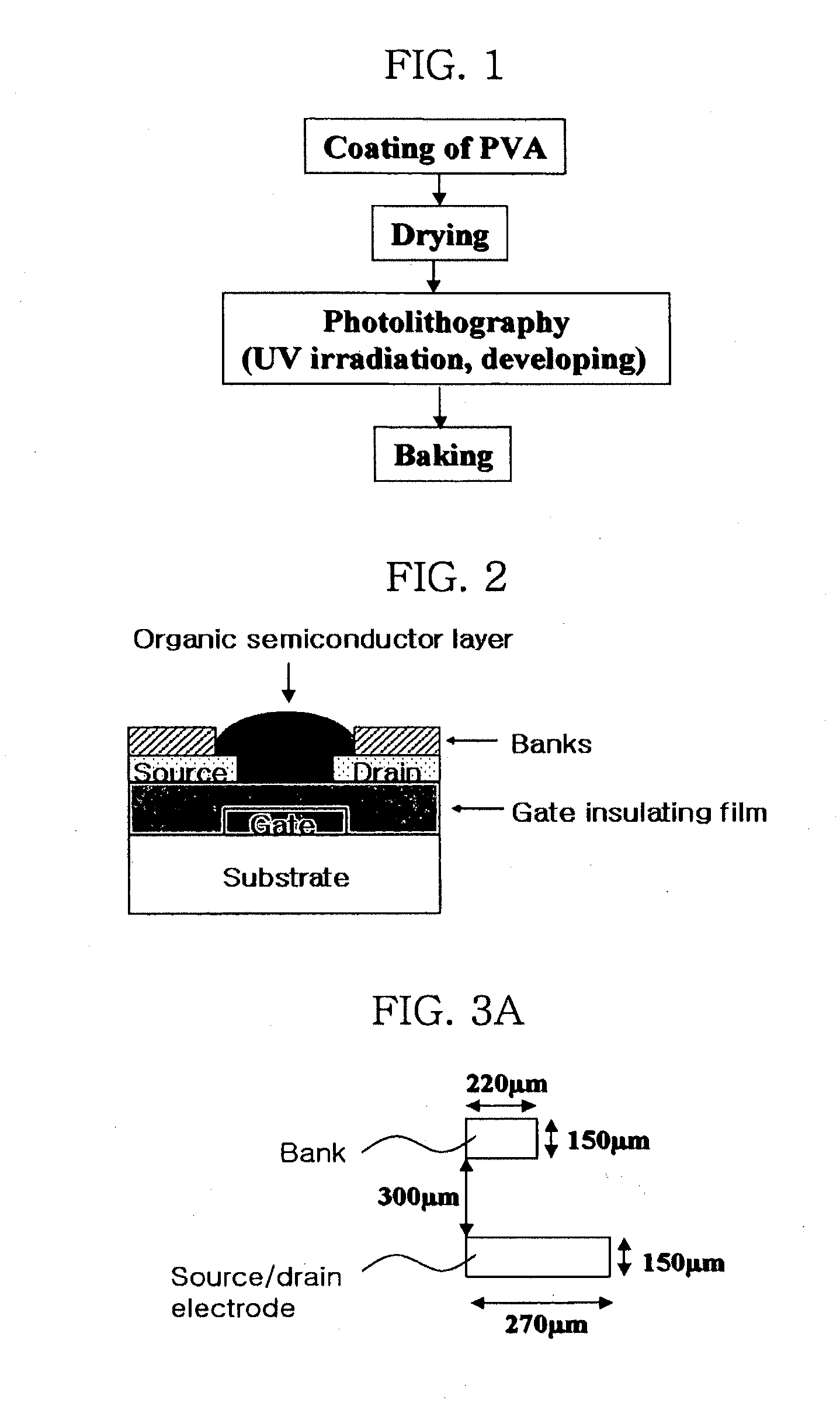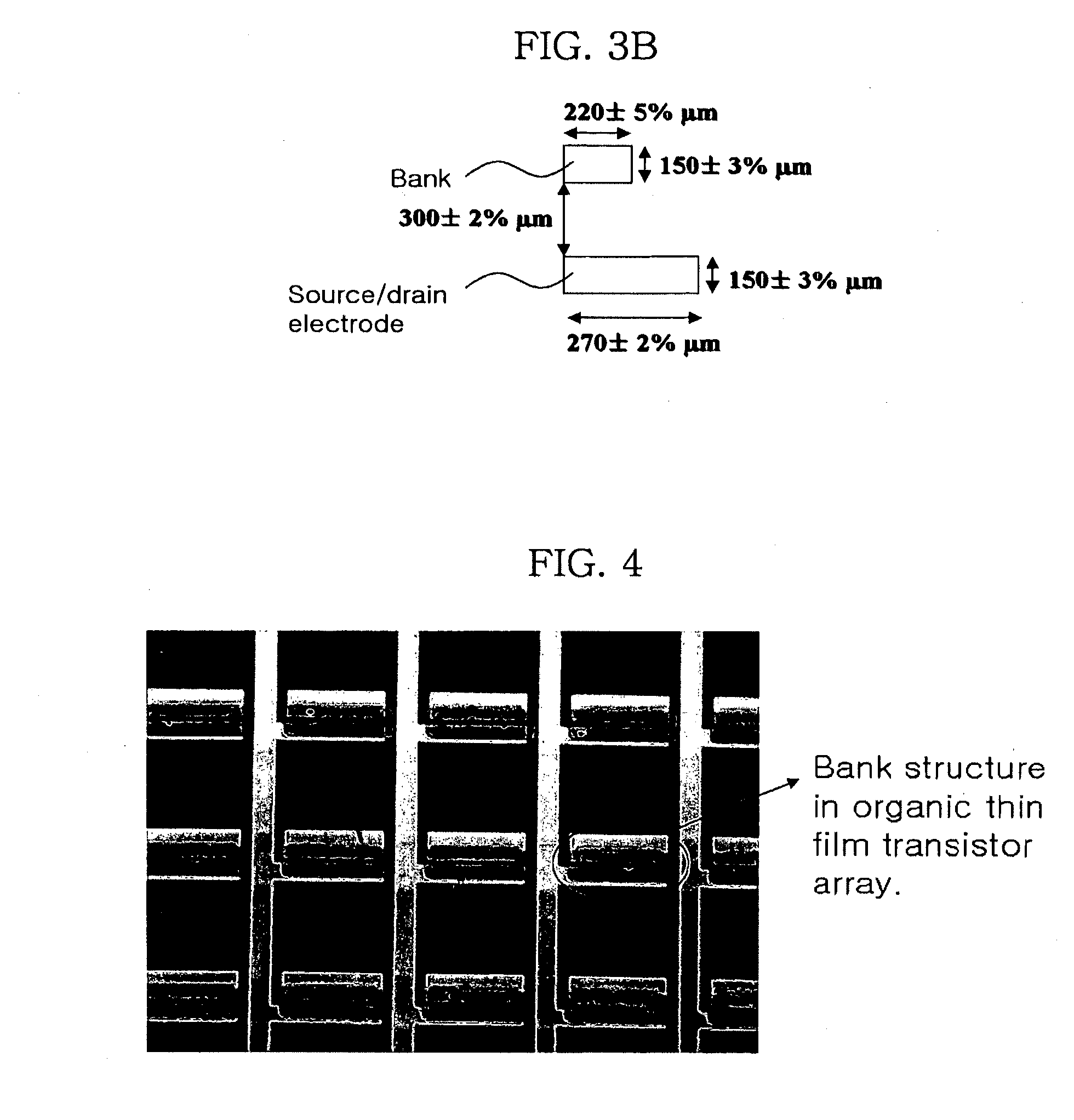Methods of fabricating organic thin film transistors
a thin film transistor and organic technology, applied in the field of forming banks, can solve the problems of degrading the properties of the affected electronic device, dielectric performance, and condensation failure, and achieve the effects of suppressing or eliminating adverse effects, suppressing or eliminating degradation of adjacent regions, and preventing the overflowing of organic solvents
- Summary
- Abstract
- Description
- Claims
- Application Information
AI Technical Summary
Benefits of technology
Problems solved by technology
Method used
Image
Examples
example embodiments
DESCRIPTION OF EXAMPLE EMBODIMENTS
[0021]Example embodiments will now be described in detail with reference to the accompanying drawings. Example embodiments provide methods for forming banks comprising the steps of (1) coating a substrate with a water-soluble polymer solution containing a UV curing agent and a water-soluble fluorine compound, and (2) irradiating the coated water-soluble polymer solution with UV light by a photolithographic patterning process, followed by a suitable developing to form a pattern of banks on the substrate surface. FIG. 1 is a process chart schematically illustrating a method for forming banks according to one embodiment of example embodiments.
[0022]The water-soluble polymer used in the method of example embodiments has a functional group with a high affinity for water, for example, one or more groups selected from a group including —OH, —COOH, —NH2 and —CONH2, within the molecular structure and includes little or no crosslinking so that it dissolves ea...
example 1
[0050]A glass substrate was cleaned, and aluminum (Al) was deposited thereon using a sputtering technique to form a gate electrode having a thickness of about 1,500 Å. An organic gate insulating film having a thickness of about 4,000 Å was then formed on the gate electrode by spin coating at 2,000 rpm, followed by sequential baking at 70° C. for 20 minutes and 200° C. for 2 hours. As will be appreciated by those skilled in the art, the viscosity of the organic insulating material and the operation of the spin coating apparatus may be modified to produce layers having different thickness ranges.
[0051]Next, a layer of gold (Au) was deposited on the insulating film to a thickness of 700 Å using a thermal evaporation method. This conductive layer was then subjected to a photolithographic process to form an appropriate etch mask and then etched to produce an electrode pattern. For this example, the deposition was conducted under a vacuum pressure of 2×10−7 torr and achieved a deposition ...
experimental example 1
[0054]In order to evaluate the patternability of banks formed in a manner according to the example embodiments, the size of a pattern of a photomask used and that of corresponding portions of the banks formed using that photomask as detailed in Example 1 were measured using a confocal laser scanning microscope (OLYMPUS LEXT OLS3000). The results are shown in FIGS. 3A and 3B, wherein FIG. 3A shows the size of the bank and source / drain patterns of a photomask used, and FIG. 3B shows the size of the corresponding banks and source / drain structures formed using the photomask. As reflected in the close agreement between the photomask measurements and the resulting pattern measurements, the method of forming banks according to example embodiments can accurately reproduce the corresponding mask feature.
[0055]FIG. 4 shows a semiconductor array produced by depositing the semiconductor material by ink spraying after formation of the banks.
PUM
 Login to View More
Login to View More Abstract
Description
Claims
Application Information
 Login to View More
Login to View More - R&D
- Intellectual Property
- Life Sciences
- Materials
- Tech Scout
- Unparalleled Data Quality
- Higher Quality Content
- 60% Fewer Hallucinations
Browse by: Latest US Patents, China's latest patents, Technical Efficacy Thesaurus, Application Domain, Technology Topic, Popular Technical Reports.
© 2025 PatSnap. All rights reserved.Legal|Privacy policy|Modern Slavery Act Transparency Statement|Sitemap|About US| Contact US: help@patsnap.com



